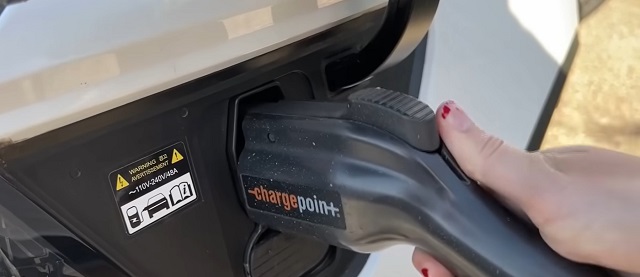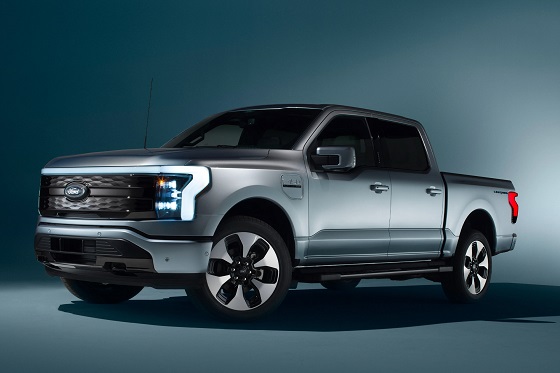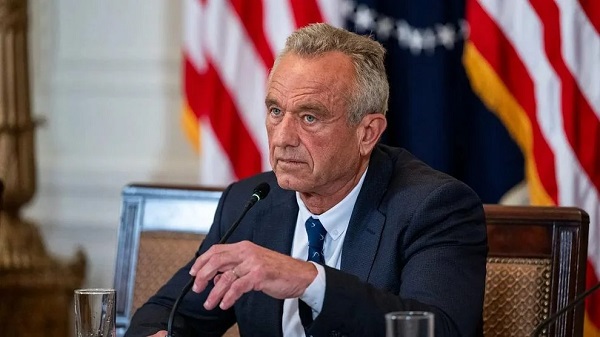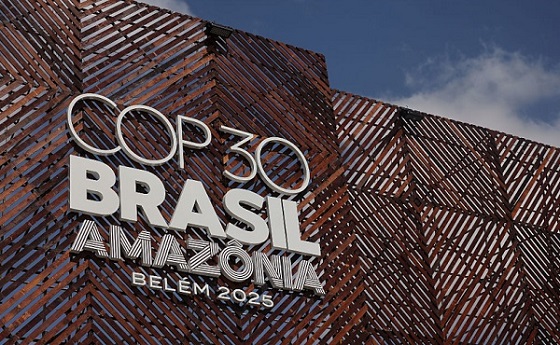Automotive
Automakers Hit Reverse On Idealistic Electric Vehicle Targets Despite Billions In Biden-Harris Subsidies

From the Daily Caller News Foundation
By Owen Klinsky
Automakers have continued to backpedal on electric vehicle (EV) targets over the last year as a slackening of consumer demand has hampered growth despite the billions in subsidies lavished on the industry by the Biden-Harris administration.
A wide array of auto manufacturers have abandoned key EV goals since February, with Volvo, Ford and Mercedes-Benz all dialing back electric quotas or dropping previously planned product lines. The shifts in corporate strategy suggest the EV transition — once touted by auto executives like Ford CEO Jim Farley as the industry’s future — may not be as feasible as once thought due to consumer aversion to lower mileage ranges, a lack of charging infrastructure and higher prices, experts told the Daily Caller News Foundation.
The auto industry’s change in direction is in spite of the billions in subsidies doled out to the industry via the 2021 Bipartisan Infrastructure Bill and the 2022 Inflation Reduction Act, with the White House offering a $7,500 federal tax credit for certain EVs to ease costs for buyers, and allocating $12 billion for carmakers to retrofit factories for EV production. The administration has also put in place stringent regulations designed to phase out internal combustion engine vehicles, including a tailpipe emissions rule that would effectively require about 67% of all light-duty vehicles sold after model year 2032 to be electric vehicles (EVs) or hybrids.
“Even after throwing money at EVs hand over fist, basically paying people tax dollars to drive these cars off the lots, you have a dire spiral of (1) not enough demand to support the number of cars being produced, and (2) the people you paid to buy them now wanting to go back to what they had before,” O.H. Skinner, executive director of the Alliance for Consumers and the former solicitor general of Arizona, told the DCNF.
Autos over the last 5 years:
Auto CEOs: “we’re going electric by 2030 so I can become the toast of the town and get glossy magazine spreads written about how visionary and green I am.”
Engineers: “that’s not possible…”
Accountants: “that’s not possible…”
Customers: “we… https://t.co/ldca2L0n4G
— Alliance For Consumers (@for_consumers) September 4, 2024
Despite the generous tax credits, consumers have been hesitant to adopt EVs at the rate the Biden-Harris administration and automakers have hoped, with EV sales growing 50% in the first half of 2023 and 31% in the first half of 2024, less than the 71% increase in the first half of 2022. Moreover, a June poll from The Associated Press-NORC Center for Public Affairs Research and the University of Chicago’s Energy Policy Institute found 46% of respondents were unlikely or very unlikely to purchase an EV, while just 21% were “very” or “extremely” likely to make the change.
Consumer sentiment towards EVs has struggled even among those who have already purchased the vehicles, with a June survey from leading consulting firm McKinsey and Company finding nearly half of Americans who own an EV want to go back to a standard vehicle.
“The [EV market] headwinds come from physical realities that translate into economic and practical realities,” Mark Mills, a distinguished senior fellow at the Texas Public Policy Foundation and an expert on the automobile market, told the DCNF. “EVs are inherently more expensive… and most consumers are very price sensitive; EV fueling for most people is far less convenient… [and] EV fueling infrastructure is extremely expensive and will take a long time to build out.”
The average cost of a new EV was 10% higher than the price of a standard vehicle as of January, with the 2024 electric version of a base Ford F-150 costing roughly $20,000 more. The Ford F-Series was the best-selling vehicle in the U.S. in 2023.
Ford canceled plans to produce a three-row electric SUV in August and reduced output of its F-150 Lightning pickup truck in January. The reversals follow Ford losing $4.7 billion on EVs in 2023, equating to nearly $65,000 per EV it sold. When reached, a Ford spokeswoman referred back previous comments to the DCNF stating that “we aren’t going to launch vehicles unless they are going to be profitable within 12 months of launch.”
“These are staggering costs to impose on American families,” Diana Furchtgott-Roth, director of the Center for Energy, Climate and Environment at the Heritage Foundation, told the DCNF.
EV carmakers Tesla and Lucid have also struggled in the last year, announcing plans to layoff roughly 10% and 6% of their workforces, respectively.
On top of sheer cost, expanding charging infrastructure has also been a challenge for manufacturers, with the Biden-Harris administration having built just seven EV charging stations in four states as of April 2024, despite the Bipartisan Infrastructure Bill earmarking $7.5 billion for the creation of a national EV charger network. A lack of demand, union requirements, as well as diversity, equity and inclusion initiatives, with the Department of Transportation requiring applicants to promise to perform “intentional outreach to underserved communities” by hosting “neighborhood block parties” in order to qualify for funding, have significantly slowed down the project’s rollout.
Beyond a lack of infrastructure, charging can simply be inconvenient for consumers, with refueling times ranging from 20 minutes to upwards of 50 hours depending on charger voltage and battery size, according to American automotive resource company Edmunds. Even “fast charging” in the urban center of Washington, D.C., can take as long as 35 minutes.
Faced with these obstacles, Volvo Cars abandoned plans to offer an all-electric line-up by the end of the decade, instead aiming to have between 90% and 100% of its cars be fully electric or plug-in hybrids by that time. Mercedes-Benz made a similar announcement back in February, slashing its target of selling 100% EVs by 2030 to just 50% after its net profit fell 21.5% year-over-year in the fourth quarter of 2023.
“The Biden-Harris administration is spending billions in tax incentives to pay auto companies to make EVs, and billions for tax credits to pay households to buy the cars,” Furchtgott-Roth told the DCNF. “Still, Americans are too smart to fall for a product that is not suited for them.”
The White House, Volvo and Mercedes-Benz did not respond to a request for comment from the DCNF.
Automotive
Ford’s EV Fiasco Fallout Hits Hard


From the Daily Caller News Foundation
I’ve written frequently here in recent years about the financial fiasco that has hit Ford Motor Company and other big U.S. carmakers who made the fateful decision to go in whole hog in 2021 to feed at the federal subsidy trough wrought on the U.S. economy by the Joe Biden autopen presidency. It was crony capitalism writ large, federal rent seeking on the grandest scale in U.S. history, and only now are the chickens coming home to roost.
Ford announced on Monday that it will be forced to take $19.5 billion in special charges as its management team embarks on a corporate reorganization in a desperate attempt to unwind the financial carnage caused by its failed strategies and investments in the electric vehicles space since 2022.
Cancelled is the Ford F-150 Lightning, the full-size electric pickup that few could afford and fewer wanted to buy, along with planned introductions of a second pricey pickup and fully electric vans and commercial vehicles. Ford will apparently keep making its costly Mustang Mach-E EV while adjusting the car’s features and price to try to make it more competitive. There will be a shift to making more hybrid models and introducing new lines of cheaper EVs and what the company calls “extended range electric vehicles,” or EREVs, which attach a gas-fueled generator to recharge the EV batteries while the car is being driven.
Dear Readers:
As a nonprofit, we are dependent on the generosity of our readers.
Please consider making a small donation of any amount here.
Thank you!
“The $50k, $60k, $70k EVs just weren’t selling; We’re following customers to where the market is,” Farley said. “We’re going to build up our whole lineup of hybrids. It’s gonna be better for the company’s profitability, shareholders and a lot of new American jobs. These really expensive $70k electric trucks, as much as I love the product, they didn’t make sense. But an EREV that goes 700 miles on a tank of gas, for 90% of the time is all-electric, that EREV is a better solution for a Lightning than the current all-electric Lightning.”
It all makes sense to Mr. Farley, but one wonders how much longer the company’s investors will tolerate his presence atop the corporate management pyramid if the company’s financial fortunes don’t turn around fast.
To Ford’s and Farley’s credit, the company has, unlike some of its competitors (GM, for example), been quite transparent in publicly revealing the massive losses it has accumulated in its EV projects since 2022. The company has reported its EV enterprise as a separate business unit called Model-E on its financial filings, enabling everyone to witness its somewhat amazing escalating EV-related losses since 2022:
• 2022 – Net loss of $2.2 billion
• 2023 – Net loss of $4.7 billion
• 2024 – Net loss of $5.1 billion
Add in the company’s $3.6 billion in losses recorded across the first three quarters of 2025, and you arrive at a total of $15.6 billion net losses on EV-related projects and processes in less than four calendar years. Add to that the financial carnage detailed in Monday’s announcement and the damage from the company’s financial electric boogaloo escalates to well above $30 billion with Q4 2025’s damage still to be added to the total.
Ford and Farley have benefited from the fact that the company’s lineup of gas-and-diesel powered cars have remained strongly profitable, resulting in overall corporate profits each year despite the huge EV-related losses. It is also fair to point out that all car companies were under heavy pressure from the Biden government to either produce battery electric vehicles or be penalized by onerous federal regulations.
Now, with the Trump administration rescinding Biden’s harsh mandates and canceling the absurdly unattainable fleet mileage requirements, Ford and other companies will be free to make cars Americans actually want to buy. Better late than never, as they say, but the financial fallout from it all is likely just beginning to be made public.
- David Blackmon is an energy writer and consultant based in Texas. He spent 40 years in the oil and gas business, where he specialized in public policy and communications.
Automotive
Politicians should be honest about environmental pros and cons of electric vehicles

From the Fraser Institute
By Annika Segelhorst and Elmira Aliakbari
According to Steven Guilbeault, former environment minister under Justin Trudeau and former member of Prime Minister Carney’s cabinet, “Switching to an electric vehicle is one of the most impactful things Canadians can do to help fight climate change.”
And the Carney government has only paused Trudeau’s electric vehicle (EV) sales mandate to conduct a “review” of the policy, despite industry pressure to scrap the policy altogether.
So clearly, according to policymakers in Ottawa, EVs are essentially “zero emission” and thus good for environment.
But is that true?
Clearly, EVs have some environmental advantages over traditional gasoline-powered vehicles. Unlike cars with engines that directly burn fossil fuels, EVs do not produce tailpipe emissions of pollutants such as nitrogen dioxide and carbon monoxide, and do not release greenhouse gases (GHGs) such as carbon dioxide. These benefits are real. But when you consider the entire lifecycle of an EV, the picture becomes much more complicated.
Unlike traditional gasoline-powered vehicles, battery-powered EVs and plug-in hybrids generate most of their GHG emissions before the vehicles roll off the assembly line. Compared with conventional gas-powered cars, EVs typically require more fossil fuel energy to manufacture, largely because to produce EVs batteries, producers require a variety of mined materials including cobalt, graphite, lithium, manganese and nickel, which all take lots of energy to extract and process. Once these raw materials are mined, processed and transported across often vast distances to manufacturing sites, they must be assembled into battery packs. Consequently, the manufacturing process of an EV—from the initial mining of materials to final assembly—produces twice the quantity of GHGs (on average) as the manufacturing process for a comparable gas-powered car.
Once an EV is on the road, its carbon footprint depends on how the electricity used to charge its battery is generated. According to a report from the Canada Energy Regulator (the federal agency responsible for overseeing oil, gas and electric utilities), in British Columbia, Manitoba, Quebec and Ontario, electricity is largely produced from low- or even zero-carbon sources such as hydro, so EVs in these provinces have a low level of “indirect” emissions.
However, in other provinces—particularly Alberta, Saskatchewan and Nova Scotia—electricity generation is more heavily reliant on fossil fuels such as coal and natural gas, so EVs produce much higher indirect emissions. And according to research from the University of Toronto, in coal-dependent U.S. states such as West Virginia, an EV can emit about 6 per cent more GHG emissions over its entire lifetime—from initial mining, manufacturing and charging to eventual disposal—than a gas-powered vehicle of the same size. This means that in regions with especially coal-dependent energy grids, EVs could impose more climate costs than benefits. Put simply, for an EV to help meaningfully reduce emissions while on the road, its electricity must come from low-carbon electricity sources—something that does not happen in certain areas of Canada and the United States.
Finally, even after an EV is off the road, it continues to produce emissions, mainly because of the battery. EV batteries contain components that are energy-intensive to extract but also notoriously challenging to recycle. While EV battery recycling technologies are still emerging, approximately 5 per cent of lithium-ion batteries, which are commonly used in EVs, are actually recycled worldwide. This means that most new EVs feature batteries with no recycled components—further weakening the environmental benefit of EVs.
So what’s the final analysis? The technology continues to evolve and therefore the calculations will continue to change. But right now, while electric vehicles clearly help reduce tailpipe emissions, they’re not necessarily “zero emission” vehicles. And after you consider the full lifecycle—manufacturing, charging, scrapping—a more accurate picture of their environmental impact comes into view.
-

 Health2 days ago
Health2 days agoRFK Jr reversing Biden-era policies on gender transition care for minors
-

 Business1 day ago
Business1 day agoGeopolitics no longer drives oil prices the way it used to
-

 Business1 day ago
Business1 day agoArgentina’s Milei delivers results free-market critics said wouldn’t work
-

 Alberta2 days ago
Alberta2 days agoAlberta’s new diagnostic policy appears to meet standard for Canada Health Act compliance
-

 Censorship Industrial Complex2 days ago
Censorship Industrial Complex2 days agoCanadian university censors free speech advocate who spoke out against Indigenous ‘mass grave’ hoax
-

 Business1 day ago
Business1 day agoDeadlocked Jury Zeroes In on Alleged US$40 Million PPE Fraud in Linda Sun PRC Influence Case
-

 Daily Caller2 days ago
Daily Caller2 days agoEx-FDA Commissioners Against Higher Vaccine Standards Took $6 Million From COVID Vaccine Makers
-

 COVID-192 days ago
COVID-192 days agoFreedom Convoy protester appeals after judge dismissed challenge to frozen bank accounts











